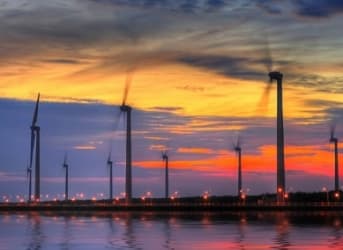Whilst enjoying the good natured exchanges on this blog concerning the pros and cons of new renewable energy sources I decided to dig deeper into the success of Green energy policies to date. Roger Andrews produced this chart the other day and the low carbon energy trends caught my eye. It is important to recall that well over $1,700,000,000,000 ($1.7 trillion) has been spent on installing wind and solar devices in recent years with the sole objective of reducing global CO2 emissions. It transpires that since 1995 low carbon energy sources (nuclear, hydro and other renewables) share of global energy consumption has not changed at all (Figure 1). New renewables have not even replaced lost nuclear generating capacity since 1999 (Figure 2). ZERO CO2 has been abated and the world has done zilch to prepare itself for the expected declines (escalating costs) of fossil fuels in the decades ahead. If this is not total policy failure, what is?

Figure 1 Nuclear, Hydro and Other Renewables (mainly wind and solar) expressed as % of total global energy consumption. The combined low carbon share reached 13.1% in 1995. In 2013 it was 13.3%. From this chart it is easy to see that Other Renewables have simply compensated for the decline in nuclear power a point made clearer in Figure 2.
One of the main problems with Green thinking is that many Greens are against both fossil fuel (FF) based energy and nuclear power. There are some notable exceptions, James Lovelock and George Monbiot, and I recognise that a number of the “pro-renewable” commenters on this blog are at least not anti-nuclear. It would also be unfair to blame the relative decline of nuclear power since 2001 exclusively on Greens but they do have to shoulder a significant slice of that responsibility.
Related: How A Solar Revolution Could Be Near
Figure 2 shows that the recent growth in Other Renewables does not compensate for the relative decline in nuclear power. What is more, stable base load is being replaced with intermittent supply that is seldom correlated with demand. FF generation is wrestling in the background, unloved and unappreciated, maintaining order in our society.

Figure 2 Nuclear and Other Renewables as a percentage of total global energy consumption. Nuclear’s contribution peaked in 2001 and the decline in nuclear since then has not been fully compensated by the rapid expansion of renewables.
The history of civilian nuclear power is of course dictated by the 1986 Chernobyl military reactor disaster that saw civilian nuclear power programs shelved. Reactors under construction were completed, like Sizewell B in England completed in 1995, but new build was halted. Figure 2 shows a slowing of nuclear growth post 1986 which presumably reflects some reactor closures post-Chernobyl but growth continued as reactors like Sizewell B were brought on line. Nuclear’s share of global energy peaked in 2001 at 6.38%. But then first generation reactors like the UK Magnox fleet began decommissioning, for example Sizewell A was shut down in 2006, and nuclear’s share of global energy went into decline that will unlikely be reversed for many years.
Related: UK Renewables May Be Turning The Tide
Many readers of this blog are aware that Mankind faces an uncertain energy future with supplies of affordable and secure fossil fuels expected to decline in the decades ahead. Many see the need to prepare for and mitigate the consequences of this. Since 1995 the share of non-fossil fuel based energy has not increased at all. We are as dependent on fossil fuels today as we were 20 years ago.

Figure 3 M. King Hubbert’s long term view of world energy.
It is worth concluding with this view of our energy world from Hubbert 1956. Was Hubbert right or was he wrong?
________________________________________________
Footnote: In another thread my good friend Luis de Sousa questioned the accuracy of BP data on renewables suggesting that BP under-reported renewables generation data. I did a quick check comparing BP generation data for UK wind 2012 with that deduced from BM reports / Gridwatch with the following result.
BP: 19.6 TWh
BM reports: 12.6 TWh
From an earlier thread we discovered that BM reports to do not meter all UK wind which tallies with this data. There is nothing to suggest that BP are under-reporting from this single example.
Commenter Willem Post also also posted this link and data:
ADVERTISEMENT
This report states 77.9% fossil, 22.1 RE, of which
16.4% hydro,
2.9% wind,
1.8% bio,
0.7% solar,
0.4 % geo, CSP, ocean
The 2013 BP report states 78.3% fossil, 21.7% RE, of which
16.4% hydro
2.7% wind
1.8% bio
0.5% PV + CSP
0.3% geo
0.0% ocean
As a result of RE build-out investments of about $1,700 billion from 2002 to 2013 (excluding mostly “socialized” investments for grid adequacy, capacity adequacy, etc., of about $400 billion not mentioned in the report), worldwide RE generation increased from 1.6% to 5.3%, a 3.8% addition, of which:
– Wind increased from 0.3% to 2.7%
– Biomass from 0.9% to 1.8%
– Solar (PV + CSP) from 0.0% to 0.5%
– Geo from 0.3% to 0.3%
– Marine from 0% to 0%
By Euan Mearns
Source: www.euanmearns.com
More Top Reads From Oilprice.com:
- Despite Strong Gains, Electric Vehicles Still Far From Mainstream
- Big Oil And Renewables: Not So Strange Bedfellows
- Innovation Needed To Provide Zero-Carbon Destination For Gas


















